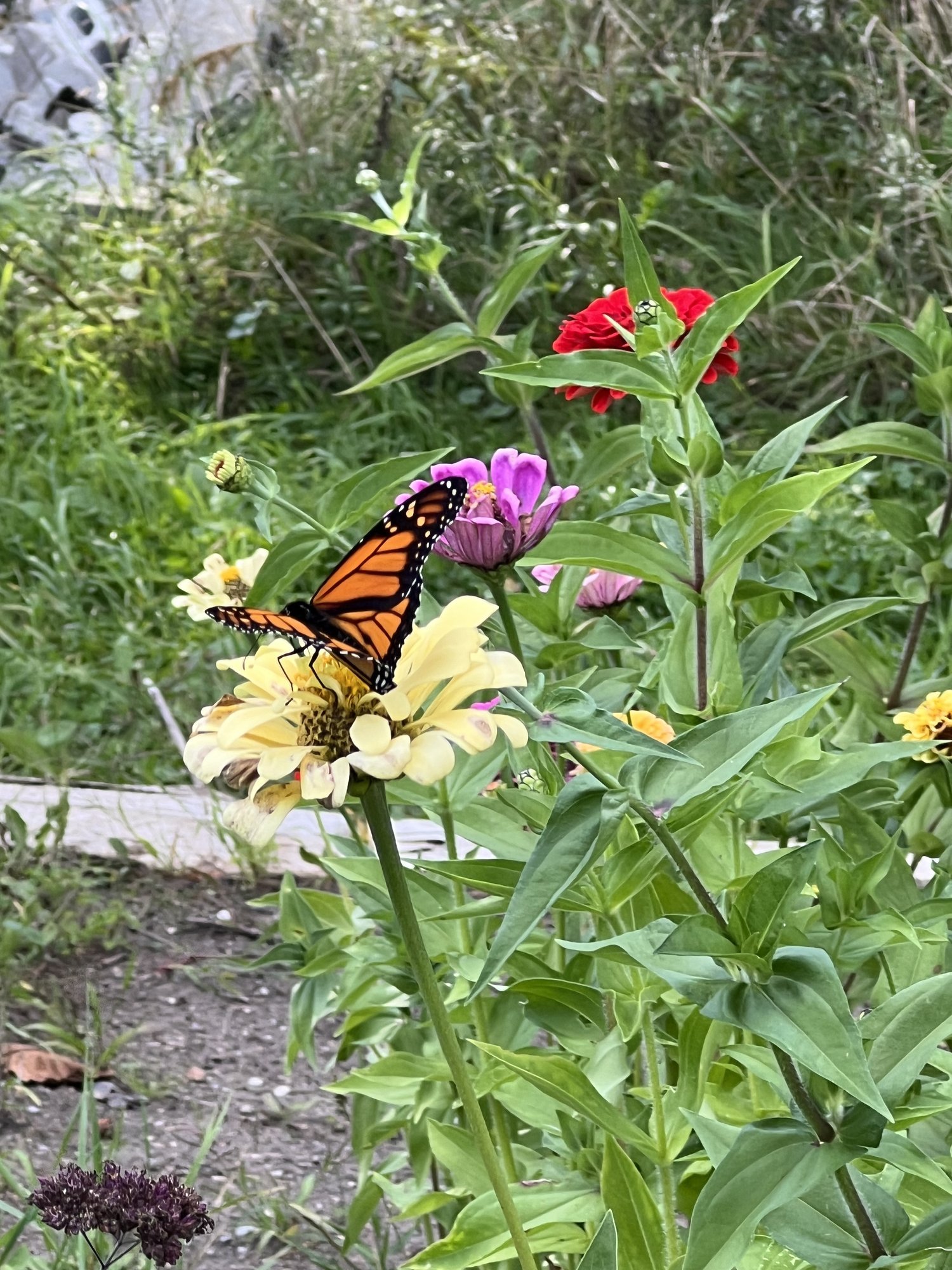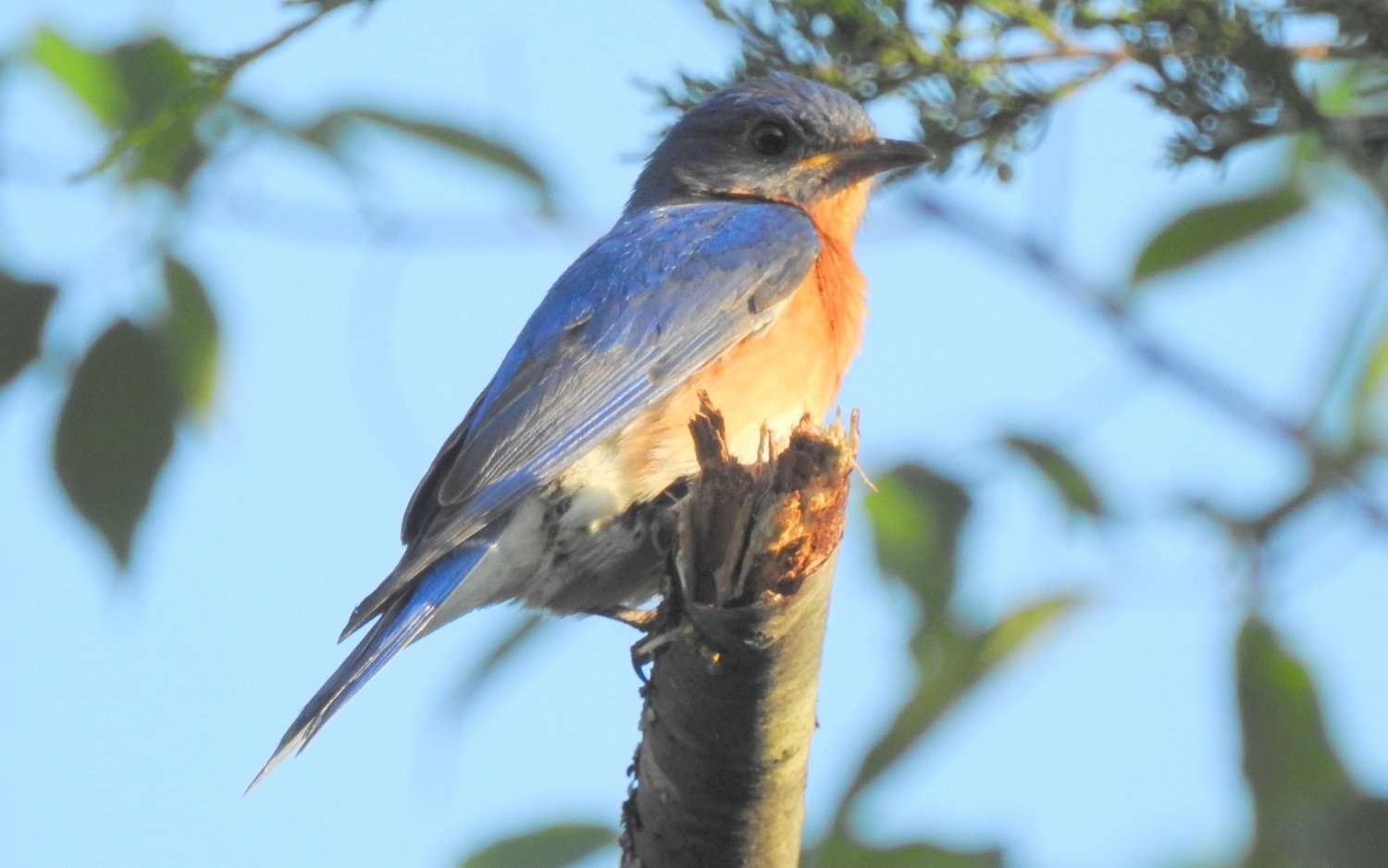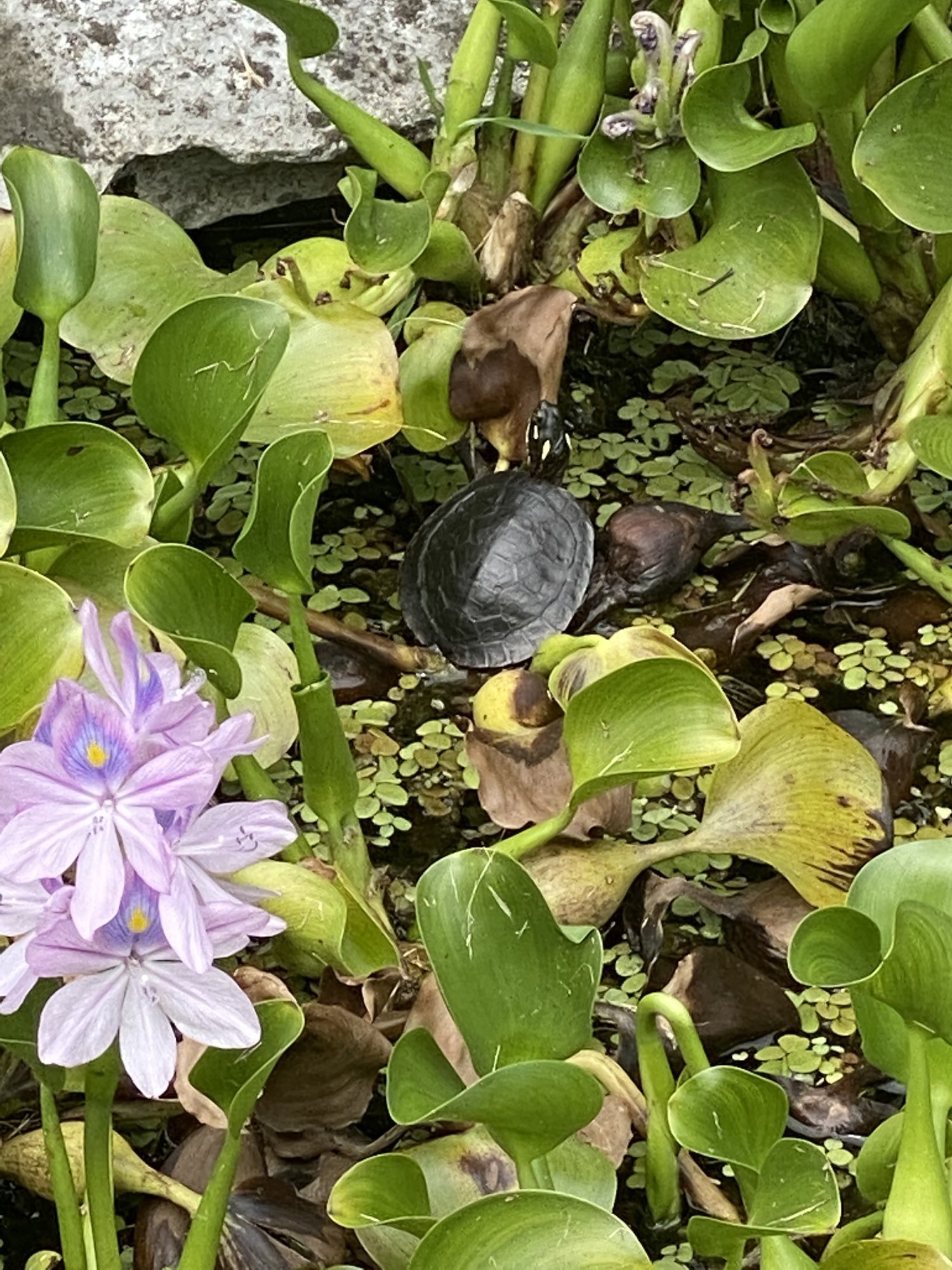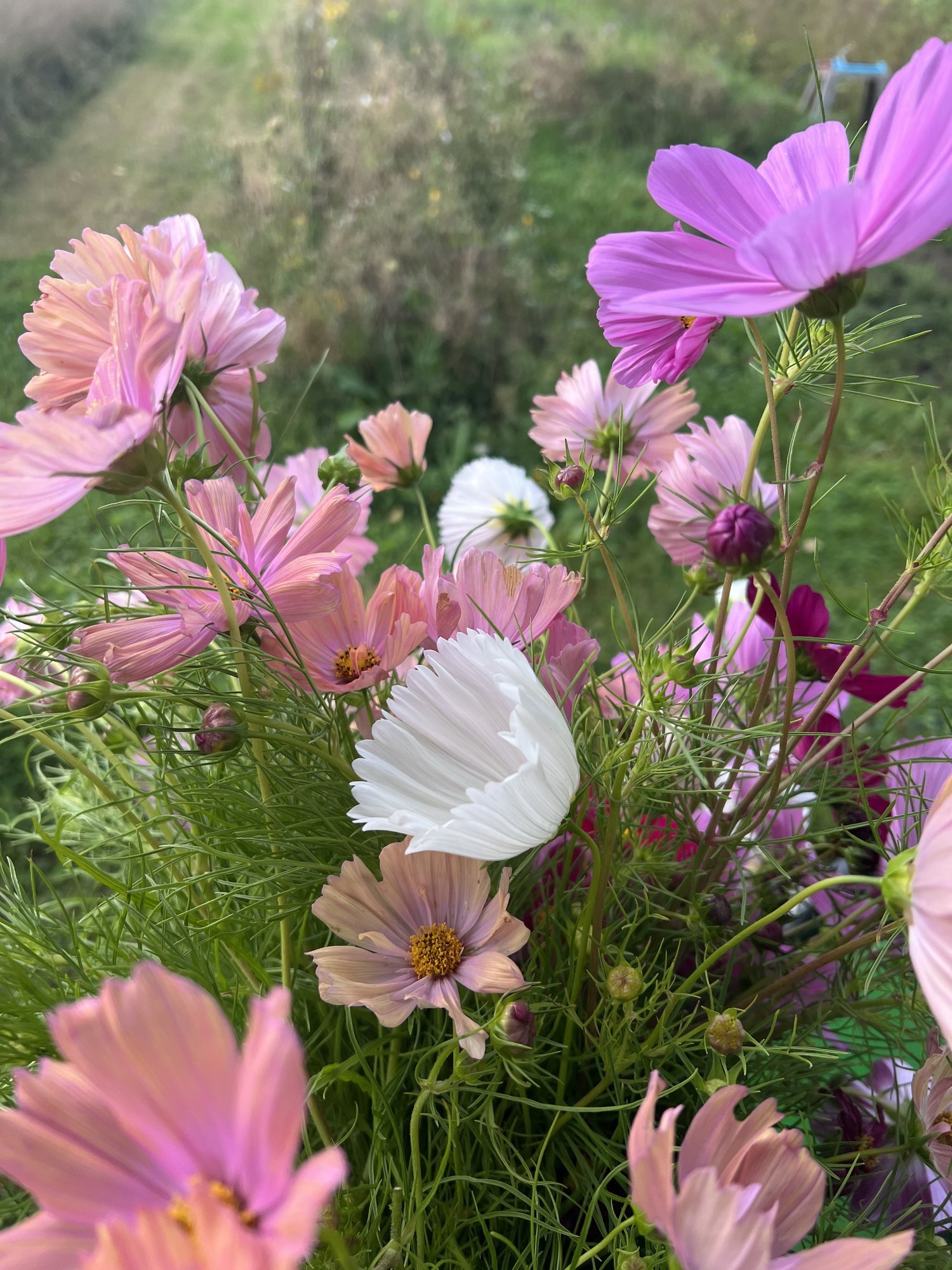Pollinator Gardens
Gardening in general has been shown to be a very healthy activity both physically and spiritually. So why not do it in an environmentally beneficial way? You see, if done correctly with the right mindset you could create a beautiful little ecosystem wherever you choose to place it, you just have to begin.
For instance, when you plant a garden that contains a large number of varied plants, you create a habitat and a source of food for important pollinators to thrive. The ecosystem will grow and broaden and Diversify - Biodiversity - enabling the ecosystem to support itself. The Key element is not to introduce something like Pesticides or Insecticides or Herbicides of ANY kind! It actually doesn't”t matter if a Spray says it is Organic or Inorganic - it is a Pesticide with a chemical that is in concentrations to suppress or wipeout an entire population and all others with it (ticks and mosquito sprays kill bees and other pollinators). In fact, Honey Bee populations took a major hit the year we had the Gypsy Moth explosion her in Kingston, Ontario. Horrified home owners were spraying to get rid of Gypsy Moths instead of using soap and water. Bee populations took a dramatic hit - Not Mite populations in hives killing them off.
If thoughtfully prepared, nature can take care of itself without the outside influence of pesticides. Remember song birds are important in all this too!!!
So, when I first decided to start flower farming, it was sort of small. I had only Dahlias and Zinnias and Gladiolus. No a diverse planting at all. I added sunflowers the following year and increased my number of beds of dahlias. Suddenly I had a terrible infestation of Flea beetles as well as dreaded cucumber beetles. I was determined to maintain organic farming practices so I contacted a company that used Integrated Pest Management. Actually it was gradual change but so simple as I spoke with them and gained ideas. First thing quit weeding all the Queen Anne’s Lace, and add Alyssum and Marigolds, flowers that attract Predatory Insects like Soldier beetles. The predatory insects will take care of the thug insects bringing systems back into balance. You can also purchase predatory insects for release from Integrated Pest Management (IPM) companies.The Predatory insects serve as a food source for birds!. I had to diversify my planting to help correct the problem. So I did!!
I love to sit on my back deck at the golden hour and watch birds. They are amazing and wonderful to watch. A little Phoebe zooming out to my hoop house and picking horseflies off the ceiling and bolting back to feed her babies in her nest. Flycatchers - they are wonderful. Eastern Bluebirds and Tree Swallows (and Phoebes) that sit on small posts intentionally placed in long rows just so they can sit and find their next meal of insects. It is a closed loop of biodiversity, that “if you build it they will come”. It took a couple of years to become a regular Bluebird haunt due to adding a number of bird houses all over the field, and other birds now come too. My first Scarlett Tanager sighting at my bird bath was last year. Yes I have several bird baths set up, as well a small pond, OK two or three. Water features act as a source of water for pollinators as well. I can boast a healthy toad and frog population to help with Slugs and Earwigs and other thugs, without spraying chemicals of any kind. It took time to build it but last year had lower thug populations than ever! Large toads in dahlias rows (found when weeding) did their jobs ruthlessly, and the balance swayed in favour of the good guys. The Field of Dreams analogies are a bit thick but ring true. You have the chance to create a magical space for survival of both plants and animals.
All this leads to a beautiful serene space can be created that will have be both functional and visually appealing and soothing to oneself. By attracting pollinators to your garden you increase chances of successful pollination and increase yields of fruit trees, vegetables, and flowers. Vegetables and flowers are good friends and do well grown together!! Food production for yourself as well as flowers is a win win.
Below is a list of very easy to grow flowers particularly from seed, some keep blooming as long as you deadhead spent blooms regualarly.
I STRONGLY suggest Organically Grown Seed or purchase from small plants (plugs) from Organic Growers only. Commercial growers will bring in plugs really early in growing year, repot them with their label on them and sell to you.
Here is the problem - those bitty little plugs were grown in an even larger production greenhouse where chemicals are used to drench the little plugs to treat any bug infestations in these large greenhouses. Often not releasing that information to the commercial grower YOU are buying from. You innocently purchase something that has Roundup in their circulatory systems that can take years to clear the plant - hence Roundup enters the ecosystem food chain. Killing bees and other pollinator insects. Hummingbirds loose eggs due to poor shell development etc - just like DDT did to Birds of Prey years ago. Human intervention with chemicals disturbs and distorts the balance of any ecosystem by removing an important link in the chain - namely a food source for another element in the chain - this all the interconnectedness of nature.
Think about your sources of plant material as well. Ask difficult questions and demand better products if you are buying seedlings.
I also suggest a healthy mix of Annuals and Perennials and many seed companies now offer specifically Organic Seeds. It takes awhile for a perennials from seed to really establish itself ( a few years normally) but well worth the wait. By the way, a mistake I made early on (not enough Perennials) and it has been a few years but my Delphinium and Foxgloves are almost at full production. Remember to have early, mid and late blooming flowers for constant supply of colour for you and food source for them.
Let some plants go to seed so you can collect your own for the following year!





